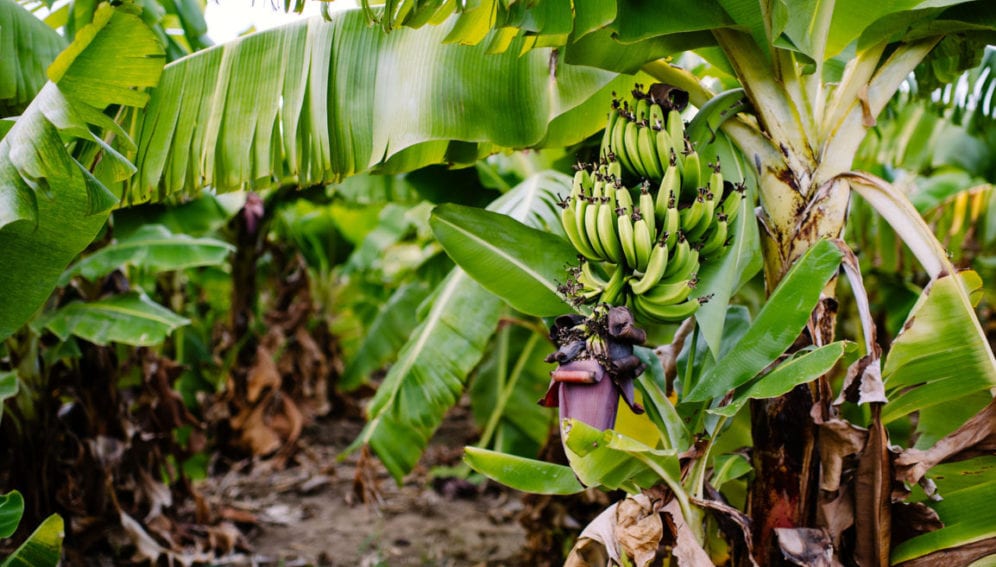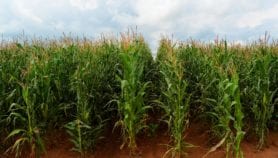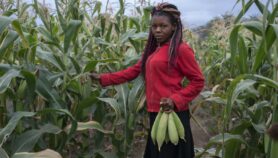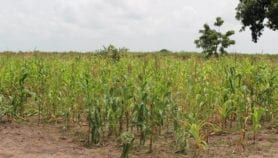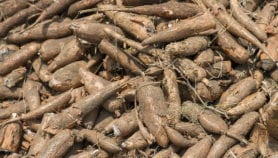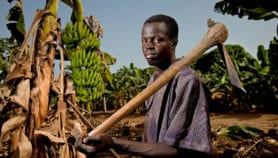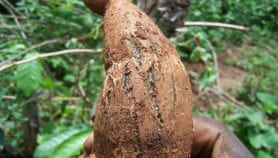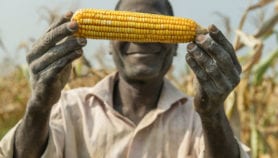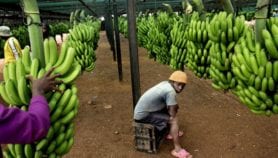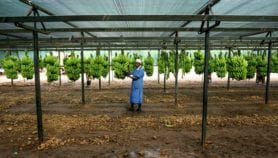By: Esther Nakkazi
Send to a friend
The details you provide on this page will not be used to send unsolicited email, and will not be sold to a 3rd party. See privacy policy.
[KAMPALA] Farmers in Uganda and other East African countries could be growing bananas enriched with vitamin A by 2020 if the world’s first human trial of the biotechnology — which is to start in October — becomes a success, experts say.
About 75 per cent of all Ugandan farmers grow bananas as a staple food, according to the country’s National Agricultural Advisory Services.
James Dale, a distinguished professor at the Australia-based Queensland University of Technology (QUT), who is leading the trial, says the amount of macronutrients — such as vitamin A and iron — in African bananas is low.
“[Banana-enriched with vitamin A] still needs to go through some thorough testing, so [there’s] no need to jump ahead and declare this [as] the silver bullet.”
Piet van Asten, International Institute of Tropical Agriculture, Uganda
The researchers hope to increase the amount of vitamin A in bananas by a minimum of 20 micrograms for each gram dry weight of the crop to enable African banana consumers improve their health, according to a statement from QUT published last month (16 June).
The statement adds that legislation to aid genetically-modified crops to be commercialised in Uganda, currently in Uganda’s parliament, could be in place by 2020 to boost the adoption of the biotechnology by farmers.
The human trial of the bananas will take place in the United States and the results are expected by the end of the year, the statement notes.
Dale says field trial of the bananas, conducted first in Australia, yielded high-performing genes. The genes were then transferred to Uganda for further field trials, which they expect to yield elite banana plants in the next three years for large-scale tests throughout Uganda, he adds.
According to Dale, 650,000 to 700,000 children die worldwide a year from lack of vitamin A, and about 300,000 people deficient in the vitamin become blind. The project, backed by a US$10 million grant from the Bill and Melinda Gates Foundation, has the potential to make a positive impact on staple food products across much of Africa, Dale explains.
Andrew Kiggundu, a plant biotechnologist and head of the National Agricultural Biotechnology Centre in Kawanda, Uganda, says about 35 per cent of children and 55 per cent in child-bearing mothers in rural Uganda suffer from vitamin A deficiency.
Kiggundu says Uganda already has a partnership with Australia since 2005, which has resulted in developing local banana varieties such as Sukaali Ndiizi.
Piet van Asten, an agronomist based at the International Institute of Tropical Agriculture, Uganda, tells SciDev.Net: “Banana-enriched with vitamin A] still needs to go through some thorough testing, so [there’s] no need to jump ahead and declare this [as] the silver bullet, but no need either to throw the technology in the bin before we've explored what's good and bad about it”.
The genetically-modified banana will change colour inside from cream to orange — more like the Vitamin A-rich sweet potatoes now popular with farmers, according to Dale.
This article has been produced by SciDev.Net's Sub-Saharan Africa desk.


